Salt Lake City Lookout
WillhiteWeb.com
Starting sometime in the late 1930s, the tallest building in Salt Lake City, the Walker Bank Building, was used by the Forest Service as a fire lookout. There was no enclosure, just a three-legged map/alidade table. The lofty 15-story height of the building and its centralized location afforded the lookout a clear view of the entire valley, over an area of 25 miles. It also enabled him to spot fires almost instantly. Officials of the Wasatch National Forest believe they had the only lookout station in America atop a downtown office building.
The driving force behind this was that during the 1930s, the city faced a water crisis. With most of the drinking water coming from streams and rivers in the mountains surrounding the Salt Lake Valley, wildfires had caused erosion that damaged the watersheds the city relied on. To fix the issue, the Forest Service and Salt Lake City Water Department together establish the fire lookout to protect watersheds.
In 1939, newspapers reported that the lookout spotted several fires in the foothill section that were speedily suppressed before gaining headway and spreading to the steeper and highly inflammable brush covered slopes. A forest service truck and CCC crew were dispatched.
In 1941, newspapers reported that the operators on top of the building were on duty 12 hours a day to spot possible conflagrations in Salt Lake valley forest areas. The lookout station was maintained jointly by the Salt Lake City water department and the United States forest service. Jay M. Hamilton of Salt Lake City was employed at the station as lookout and had at his disposal facilities connecting him directly with the forest service fire dispatcher, J.E. Gurr, Wasatch forest supervisor. His hours of operation were from 9 a.m. to 9 p.m., the period during which forest fires usually occur, officials said. Mr. Gurr said there had been only a minimum number of forest fires during 1941, most of which had occurred being minor grass fires near Ensign peak. The lookout station was established to cut down further the possibilities of a major fire in the vast forest areas in the valley, said Mr. Gurr. At the end of the season, a letter was sent to officials at the Walker Bank and Trust company thanking them for allowing the forest service to establish a lookout station on the top of the building. It said, In loaning the forest service the use of your lookout tower, you have been rendering the public of this city a valuable and unselfish service for which we are all grateful.
In 943 and 1944, the lookout was 16-year old James Sarvis. He would scan the horizon every few minutes through binoculars for fires in the Wasatch National Forest.
In 1946, a newspaper joked that the business of being a forest fire watcher is a rugged life, but not for ex-serviceman Christian Jensen. He was doing his job amid the roaring traffic boom in downtown Salt Lake City. From his citified forest fire lookout, Jensen scaned the nearby slopes of the Wasatch Mountains for evidences of forest fires.
Jensen said he wanted to become a full-fledged forest ranger and the following year draw an assignment not quite so civilized.
1948 was likely the last use of the building as a fire lookout. The building is known now as the Walker Center, owned and operated b Wells Fargo.
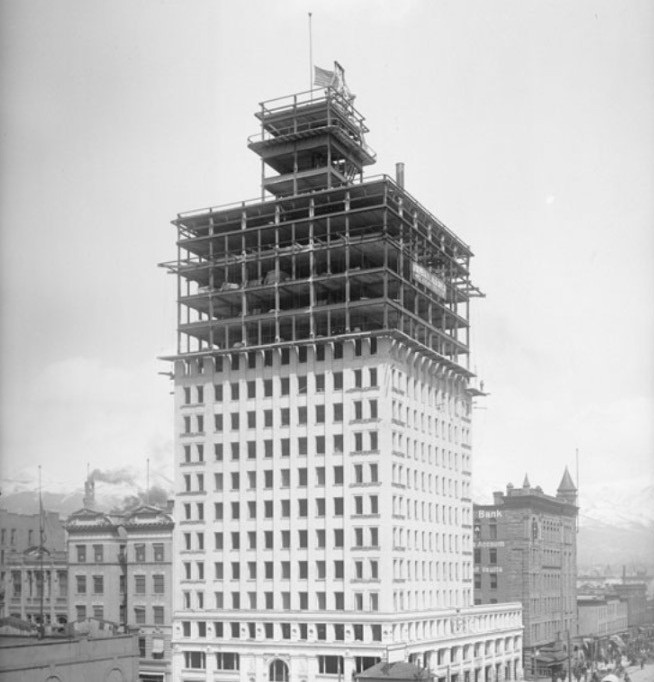
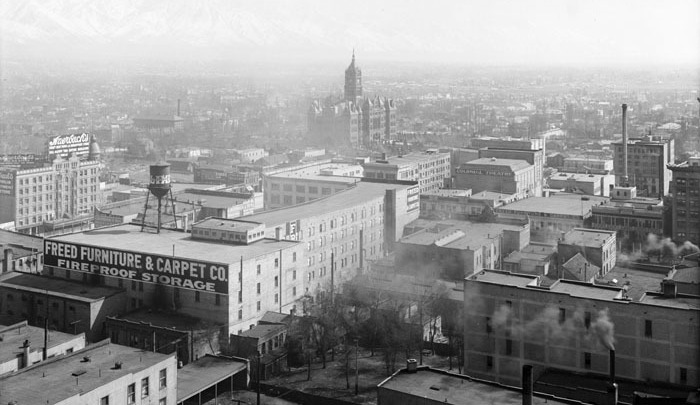
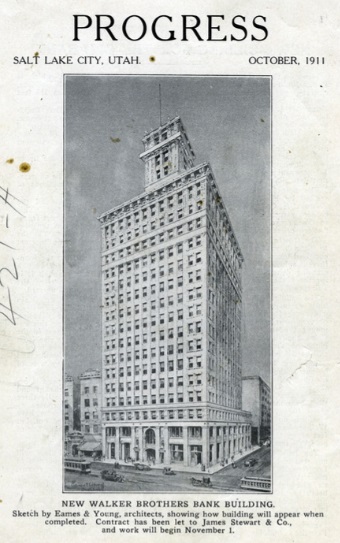
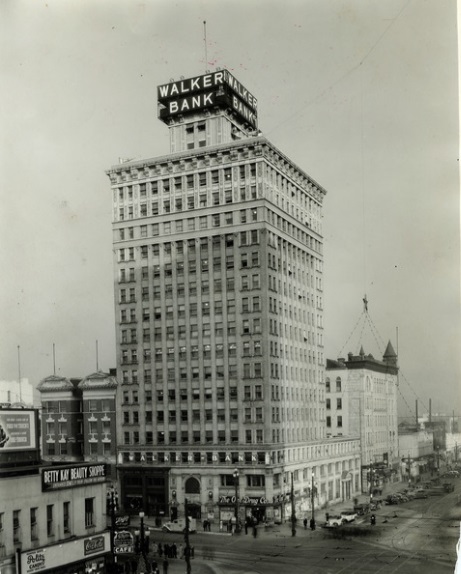
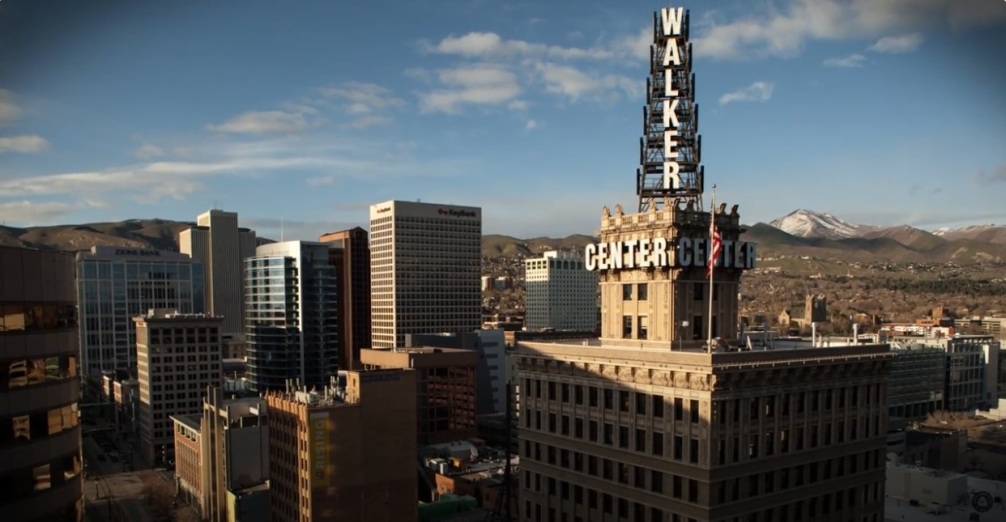
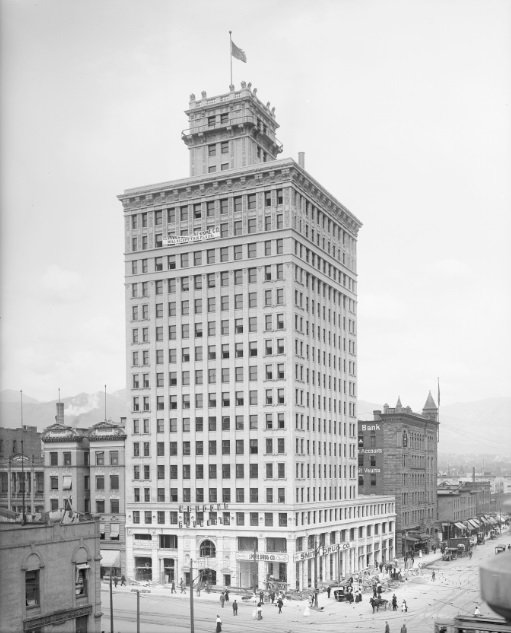
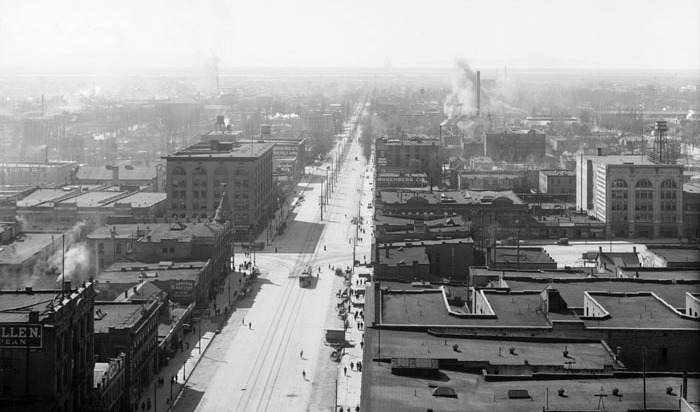
West view from the Walker Bank Building.
1912 under construction.
Southeast view from the Walker Bank Building.
Walker Center (Walker Bank Building) with some of the foothills of the Wasatch Mountains in the distance.






